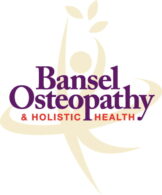The Achilles tendon is a tendon at the back of the lower leg and is actually the largest tendon in the body! It connects muscles in your calf and lower leg to your heel bone, and like all tendons they are very strong but not very flexible. When it goes beyond its limits, it can become inflamed (tendonitis) or in some rare cases, tear (rupture).
Achilles tendonitis is an inflammatory injury of the Achilles tendon. It most commonly affects athletes, particularly runners, and people who play sports like tennis, netball and basketball that require lots of starts, stops, and turns.
Pain around the tendon is the most common symptom and can range from a slight ache and stiffness to severe pain along with mild swelling. You may also feel some stiffness around the heel, calf and sole of the foot, especially in the morning but it will typically eases as you warm up and stretch your ankle and leg.
Achilles tendon injuries often occur when people don’t warm up the calf muscles before exercising, or suddenly increase how much exercise they are doing overall. The tighter the calf muscles, the more tension that’s placed on the Achilles tendon and the more likely damage to the tissue may happen.
Achilles Tendon Strengthening Exercises
In the video below, Shani demonstrates some simple exercises to strengthen your Achilles tendon. These can be effectively used as part of your warm-up routine and can help prevent any over stretching and tension. They can also be used as part of your exercise routine and improve recovery should mild injuries occur.
Achilles tendon strengthening exercises
If you have injured your Achilles tendon here are some to tips to help reduce pain and swelling!
- Take time to rest!
It is essential to initially rest so the area has time to heal. Depending on the severity of the injury, gentle calf stretches can be beneficial. - Ice the injured area!
Using ice packs wrapped up in a thin towel will help to reduce inflammation and numb the pain. - Use extra support if needed!
Use a tubigrip support or kinesiology tape to stop the tendon moving around too much, whilst it recovers. - What to do if it keeps on happening
If you keep getting recurrent injuries, it might be due to other mechanical problems with your lower limbs, feet (flat feet) or the need for orthopaedic shoe support. It could also be that your tissues need some supplement support to assist with healing and strengthening so it would be worth coming into the clinic to speak with us and have it assessed and treated.
If you need more advice on how to deal with an injury then give the clinic a call on 01444 200575.

